
Sandy Kim, Sandy Kim
Softcover, 80 pp., offset 4/4, 10 x 8 inches
Edition of 500
ISBN 978-0-615-32175-2
Published by Unpiano Books
out of print
Sandy Kim utilizes a highly self-referential style of photography which peers into the tiny microcosm of one woman’s life. Reminiscent of the casual documentary style popularized by Nan Goldin in the Eighties, the photographs in Sandy Kim highlight her life at one particular moment and the people who are revolving in and around it.
—Jesse Pollock
Sandy Kim is pretty short, has a ton of hair, a broken orange backpack and always loses her camera. When that happens, she just gets a disposable and keeps taking pictures. It’s this lackadaisical tenacity that translates into her photos, how they always looked kind of busted but warmly worn in and comfortable. Like many young photographers, she’s made her friends her subjects — landscapes of young women, tattoos and San Francisco fog. But she never lays a soft hand, as if anything flattering in her photos is accidental. That’s not to say her photos are purposefully unappealing or harsh, but simply that they are so often just really gross — honest portraits of much of her daily life. But Sandy’s grossness is completely malleable, sometimes funny, sometimes horrific, sometimes unbelievably lush. Sandy is such a brazen and unafraid woman and that power continually streams strongly in her photos, across all spectrums of feeling and subject. Throughout Sandy Kim, there is a lot of blood, but that blood is never the same — blood on her sheets after sex, blood from a dead body covered in a sterile white sheet, blood on the hand of a friend after an unknown accident. He’s smiling, looking straight at the camera, at Sandy. They both know it will heal.
—Matthew Schnipper
Culture, Distribution, Jesse Pollock, Mark Kaiser, Matthew Schnipper, Nan Goldin, Photography, Sandy Kim, Unpiano Books
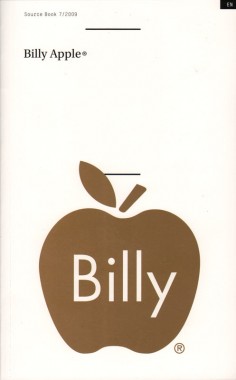
Zoë Gray, Nicolaus Schafhausen and Monika Szewczyk, Billy Apple
Softcover, 112 pp., offset 4/1, 125 x 200 mm
Edition of 1000
ISBN 978-90-73362-89-5
Published by Witte de With
$15.00 · out of stock
Billy Apple was created in 1962 as a work by the New Zealand-born artist Barrie Bates, who changed his name to become a living brand after graduating from London’s Royal College of Art. For this volume, four writers combine to discuss the brand, providing a chronology, a contextualization of Apple’s practice within institutional critique and his enduring significance for younger generations.
Art, Barrie Bates, Bénédicte Ramade, Billy Apple, Christina Barton, DAP, Michelle Menzies, Monika Szewczyk, Nicolaus Schafhausen, William Wood, Witte de With, Zoë Gray
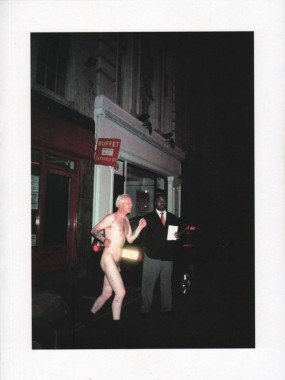
Jonnie Craig, Untitled
Softcover, 72 pp., offset 4/4, 210 X 286 mm
Edition of 750
ISBN 978-1-907071-05-8
Published by Mörel Books
$15.00 ·
Foreword by Andy Capper.
Andy Capper, Aron Morel, Culture, Distribution, Harry Farrell, Jonnie Craig, Morel Books, Photography, Ryan McGinley
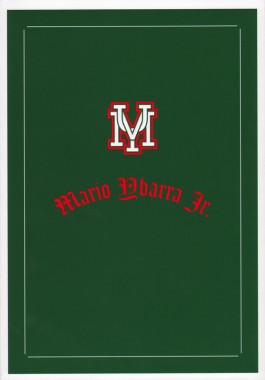
Mario Ybarra Jr., Capp Street Project
Softcover, 48 pp., offset 4/2, 6.5 x 9.25 inches
Edition of 1000
ISBN 978-0-9725080-7-0
Published by CCA Wattis Institute of Contemporary Art
$12.00 ·
When referred to as a Chicano artist in the Los Angeles Times, Mario Ybarra Jr. once protested, “I make contemporary art that is filtered through a Mexican-American experience in Los Angeles.” Filled with graffiti, restaurant signage and stills from music videos, with sweeping graphic lines and lyric abstractions, his outrageous, multicolored murals speak about his particular experience as an artist and a Mexican-American, both politically and aesthetically. Compactly designed by Jon Suede/Stripe, this slim, dynamic catalogue with paper changes features an essay on the artist’s entire oeuvre by Jens Hoffmann, along with an engaging text by Claire Fitzsimmons. Produced to accompany Ybarra’s installation at San Francisco’s Capp Street Project, this volume is the artist’s first monograph, as well as a thorough document of the mural he produced over the course of his residency there.
Anna Helwing Gallery, Art, Capp Street Project, CCA Wattis Institute of Contemporary Art, Claire Fitzsimmon, DAP, Jens Hoffman, Mario Ybarra Jr.
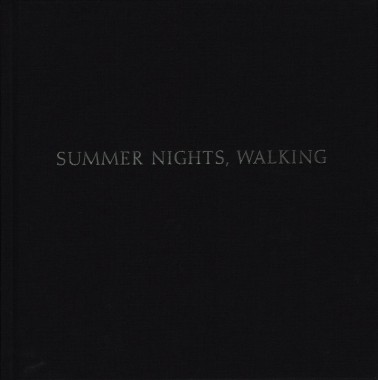
Robert Adams, Summer Nights, Walking
Softcover, 84 pp., offset 1/tritone, 8.75 x 9 inches
Edition of 2000
ISBN 9781597111171
Published by Aperture
out of stock
In this exquisitely produced book, the influential American photographer Robert Adams revisits the classic collection of nocturnal landscapes that he began making in the mid-1970s near his former home in Longmont, Colorado. Originally published by Aperture in 1985 as Summer Nights, this new edition has been carefully reedited and resequenced by the photographer, who has added 39 previously unpublished images. Illuminated by moonlight and streetlamp, the houses, roads, sidewalks and fields in Summer Nights, Walking retain the wonder and stillness of the original edition, while adopting the artist’s intention of a dreamy fluidity, befitting his nighttime perambulations. The extraordinary care taken with the new reproductions also registers Adams’ attention to the subtleties of the night, and conveys his appeal to look again at places we might have dismissed as uninteresting. Adams observes, “What attracted me to the subjects at a new hour was the discovery then of a neglected peace.”
Aperture, Art, Photography, Robert Adams, Yale University Art Gallery
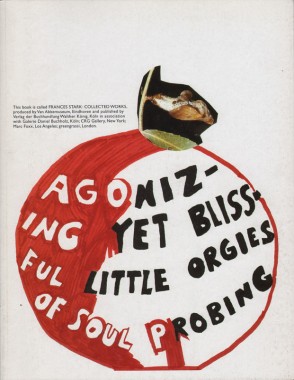
Frances Stark, The Collected Works
Softcover, 160 pp., offset 4/1, 220 x 280 mm
Edition of 2000
ISBN 978386560263
Published by Walther König
$54.00 · out of stock
The Los Angeles-based artist and art writer Frances Stark has gathered an international cult following for her prolific prose and her smart, honest and intimate artwork. This engaging artist’s book is conceived as a companion piece to Stark’s Collected Writings 1993–2003, fashioning itself as a graphic counterpart that draws from the artist’s paintings, collages, drawings, videos, poetry and more, from 1993 to the present. Through provocative and diaristic text notes printed alongside Stark’s sometimes humorous, often self-scrutinizing images, The Collected Works addresses the paradox of reproducing visual art that is essentially non-photogenic by nature — because of its tactility, detail or scale. The book formally addresses how verbiage flows in and out of the work(s), and leaves no space for the legitimizing language of the critic or curator. Neither a typical catalogue nor monograph, it pushes for a third form, a new art work constructed from existing pieces.
Art, DAP, Frances Stark, Galerie Daniel Buchholz, Marc Foxx, Van Abbemuseum, Walther König
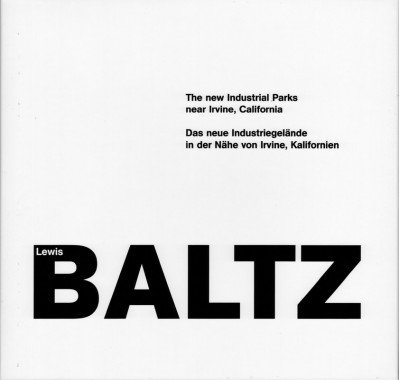
Lewis Baltz, The New Industrial Parks Near Irvine, California
Hardcover/slipcase, 112 pp., offset 1/duotone, 285 x 275 mm
English and German
Edition of 2000
ISBN 0-9630785-6-9
Published by RAM, Steidl
$55.00 ·
Lewis Baltz, with his iconic, minimalist photos of suburban landscape, is considered the founder of the New Topographics movement. Reproduced for the first time, his earliest portfolio, The Tract Houses (1971), and his preliminary forays into a minimal aesthetic, The Prototype Works (1967-1976), illuminate Baltz’s drive to capture the reality of a sprawling Western ecology gone wild. Together with The New Industrial Parks near Irvine, California, this trilogy reveals the indelible importance of Baltz in the development of contemporary photography. “Baltz turned his camera on the virtually featureless built environment of California … He pushed his compositions to an astringent minimum,” writes curator Sheryl Conkelton in an informative essay.
Art, Lewis Baltz, Photography, RAM, Sheryl Conkelton, Steidl, Whitney Museum
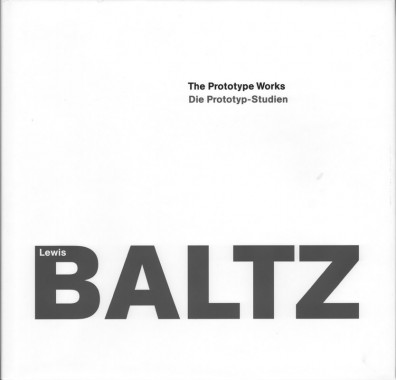
Lewis Baltz, The Prototype Works
Hardcover, 112 pp., offset 1/tritone, 285 x 275 mm
English and German
Edition of 2000
ISBN 0-9703860-5-2
Published by RAM, Steidl
$70.00 ·
Lewis Baltz, with his iconic, minimalist photos of suburban landscape, is considered the founder of the New Topographics movement. Reproduced for the first time, his earliest portfolio, The Tract Houses (1971), and his preliminary forays into a minimal aesthetic, The Prototype Works (1967-1976), illuminate Baltz’s drive to capture the reality of a sprawling Western ecology gone wild. Together with The New Industrial Parks near Irvine, California, this trilogy reveals the indelible importance of Baltz in the development of contemporary photography. “Baltz turned his camera on the virtually featureless built environment of California … He pushed his compositions to an astringent minimum,” writes curator Sheryl Conkelton in an informative essay.
Art, Lewis Baltz, Photography, RAM, Sheryl Conkelton, Steidl, Whitney Museum
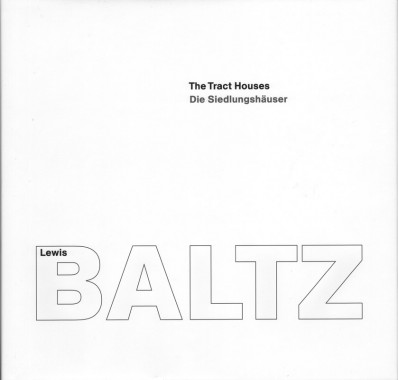
Lewis Baltz, The Tract Houses
Hardcover, 68 pp., offset 1/tritone, 285 x 275 mm
English and German
Edition of 2000
ISBN 0-9703860-4-4
Published by RAM, Steidl
$65.00 ·
Lewis Baltz, with his iconic, minimalist photos of suburban landscape, is considered the founder of the New Topographics movement. Reproduced for the first time, his earliest portfolio, The Tract Houses (1971), and his preliminary forays into a minimal aesthetic, The Prototype Works (1967-1976), illuminate Baltz’s drive to capture the reality of a sprawling Western ecology gone wild. Together with The New Industrial Parks near Irvine, California, this trilogy reveals the indelible importance of Baltz in the development of contemporary photography. “Baltz turned his camera on the virtually featureless built environment of California … He pushed his compositions to an astringent minimum,” writes curator Sheryl Conkelton in an informative essay.
Art, Lewis Baltz, Photography, RAM, Sheryl Conkelton, Steidl, Whitney Museum
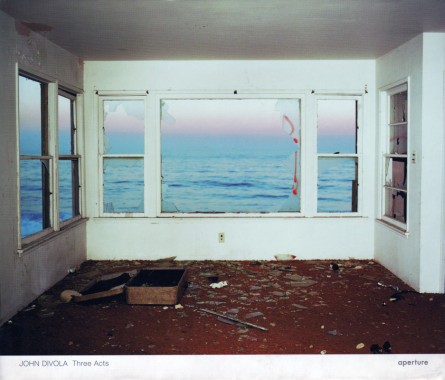
John Divola, Three Acts
Hardcover, 144 pp., offset 4/duotone, 11 x 9.25 inches
Edition of 2000
ISBN 9781931788953
Published by Aperture
$50.00 ·
In 1973, California artist John Divola began the first of three highly ambitious and original bodies of work that form Three Acts, the first book dedicated to them. His Vandalism series comprises black-and-white photographs of interiors of abandoned houses. Entering illegally, Divola spray-painted markings that referenced action painting as readily as the graffiti that was then becoming a cultural phenomenon. For the following year’s Los Angeles International Airport Noise Abatement series, he photographed a condemned neighborhood bought out to serve as a noise buffer for new runways, focusing on evidence of previous unsanctioned entries by other vandals. His final work, Zuma, documents the destruction of an abandoned beachfront property by the artist and others, as it deteriorates frame by frame and eventually burns. Divola has much in common with artists such as Bruce Nauman and Robert Smithson who have used photography to investigate other topics. He describes his innovative practice succinctly: “My acts, my painting, my photographing, my considering, are part of, not separate from, this process of evolution and change. My participation was not so much one of intellectual consideration as one of visceral involvement.”
Aperture, Art, DAP, David Campany, Francesca Richer, Jan Tumlir, John Divola, Michael Famighetti, Photography
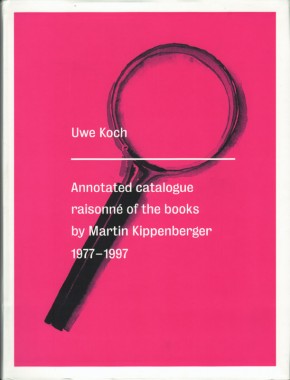
Martin Kippenberger, Annotated Catalogue Raisonné of the Books by Martin Kippenberger 1977-1997
Softcover, 368 pp., offset 1/1, 8.25 x 11 inches
Edition of 5000
ISBN 9781891024658
Published by Distributed Art Publishers
$55.00 · out of stock
Roberta Smith called him the “madcap bad boy of contemporary German art” and also “one of the three or four best German artists of the postwar period.” Martin Kippenberger disrupted the status quo throughout his brief, excessive life, not just by making art of every variety and medium but also by conducting an extended performance in the vicinity of art that involved running galleries, organizing exhibitions, collecting the work of his contemporaries and overseeing assistants. He published books and catalogues, played in a rock-and-roll band and cut records, ran a performance-art space during his early years in Berlin, became part owner of a restaurant in Los Angeles during six months he spent there preparing for an exhibition, and collaborated extensively with other artists. This particular volume considers his output of artist’s books, as well as his exhibition catalogues and all the publications whose content he either created or edited. More than just documentation, this publication makes accessible for a wider public the multiple aspects of Kippenberger’s books, with all the complexity and consequence of his oeuvre intact.
Alex Katz, Art, DAP, Diedrich Diederichsen, Distributed Art Publishers, Martin Kippenberger, Roberto Ohrt, Typography, Uwe Koch
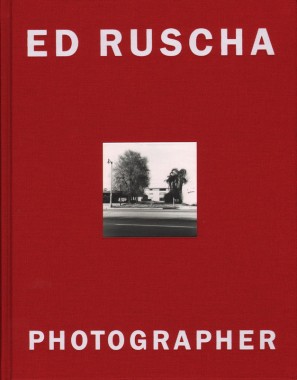
Ed Ruscha, Ed Ruscha Photographer
Hardcover, 184 pp., offset 4/1, 225 x 260 mm
Edition of 2000
ISBN 9783865212061
Published by Steidl
$35.00 · out of stock
Ed Ruscha’s relationship to photography is complex and ambivalent. The world-class painter — and author of a 1972 New York Times article called “‘I’m Not Really a Photographer’” — has been known to refer to his work in this second medium as a “hobby,” despite considerable, persistent critical interest. Whether he likes it or not, the small albums of plainly-shot, snapshot-sized images he produced in the 1960s and 70s, including Twenty-Six Gasoline Stations, intrigued his contemporaries and earned him an unshakable reputation. How? His subject matter was neither purely documentary nor solely artistic, in fact it was stereotypical and banal, with motifs drawn from the car-dominated western landscape. That rebellious material, along with his serial presentation, made for a mythical road-movie or photo-novel effect with Beat Generation overtones. The combination attracted artists and critics both, especially while serial logic was prominent in Pop art and Minimalism, and then retained that interest later as serial work became prominent in Conceptual art. Critics have remained attentive for decades, and Ruscha’s influence remains apparent in new work in Europe and North America. Ed Ruscha, Photographer departs from earlier collections to explore how these images — and all of Ruscha’s work in disciplines including painting, drawing, printmaking and photography–are guided and shaped by a single vision.
Art, DAP, Ed Ruscha, Lynn Scrabis, Makiko Ushiba, Photography, Steidl, Thea Hetzner, Whitney Museum
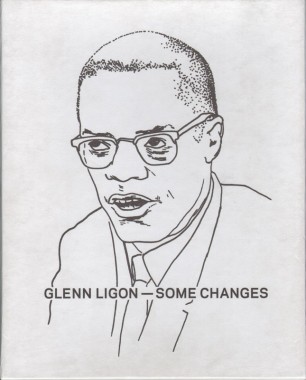
Glenn Ligon — Some Changes
Softcover/slipcase, 200 pp., offset 4/1, 220 x 270 mm
Edition of 2000
ISBN 9781894212069
Published by The Power Plant
$40.00 ·
Glenn Ligon is one of the preeminent members of a generation of American artists who came to prominence in the late 1980s with conceptually-based paintings, photographs and text-oriented works concerning the social, linguistic and political constructions of race, gender and sexuality. Incorporating sources as diverse as photographic scrapbooks and Richard Pryor’s stand-up comedy routines — his lush coal-dust paintings of excerpts from James Baldwin’s 1955 essay “Stranger in the Village,” for instance — Ligon’s art is a meditation on representation of the self in relation to culture and history. Handsomely designed with a hardcover slipcase, Some Changes is the artist’s first significant monograph. Well-illustrated texts by critics and curators Wayne Baerwaldt, Huey Copeland, Darby English, Wayne Koestenbaum and Mark Nash survey Ligon’s works from 1982 to 2005, and a candid interview with Toronto artist Stephen Andrews delves into Ligon’s personal insights and professional experiences.
Art, DAP, Darby English, Glenn Ligon, Huey Copeland, Mark Nash, Stephen Andrews, The Power Plant, Wayne Baerwaldt, Wayne Koestenbaum












